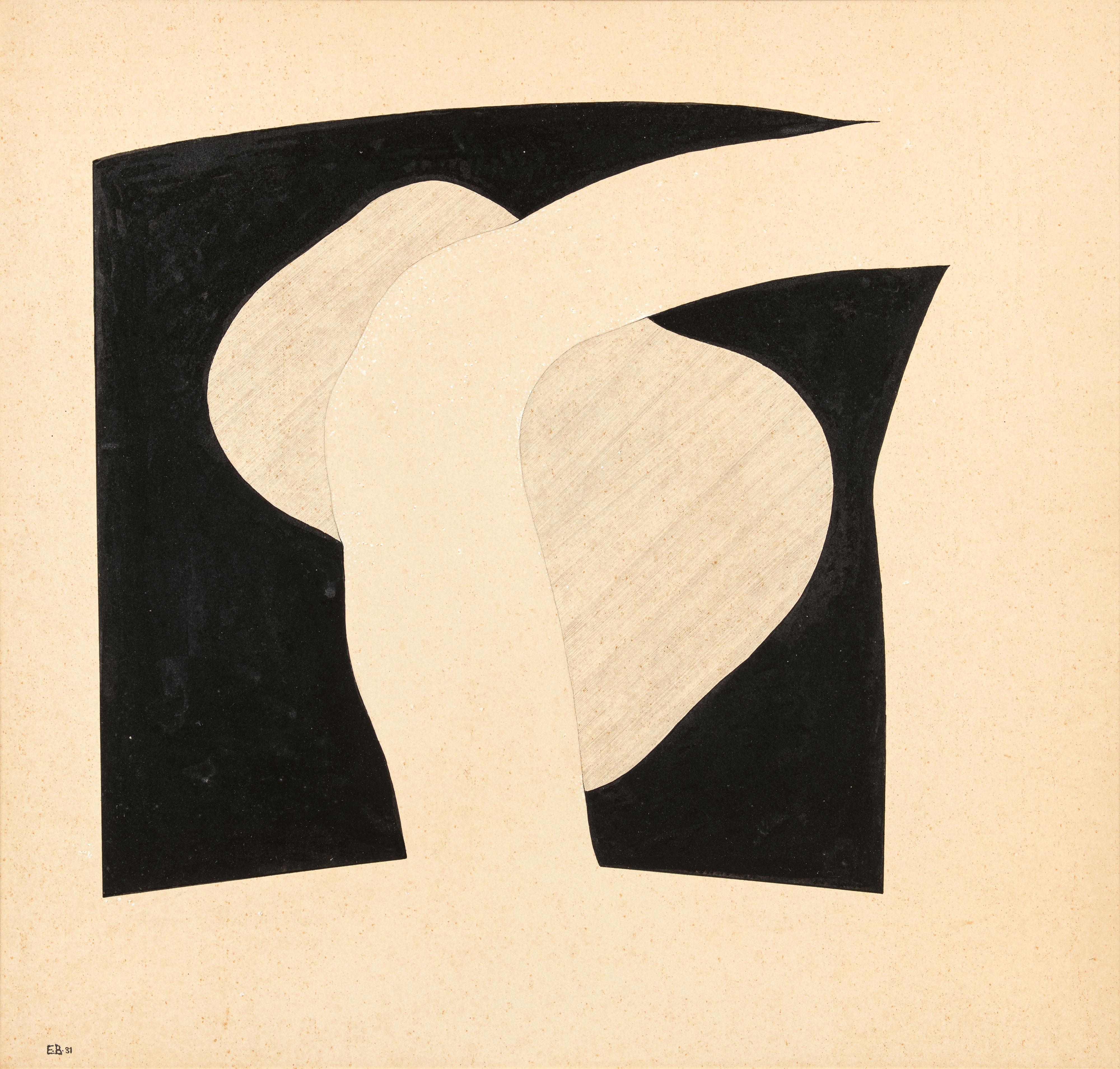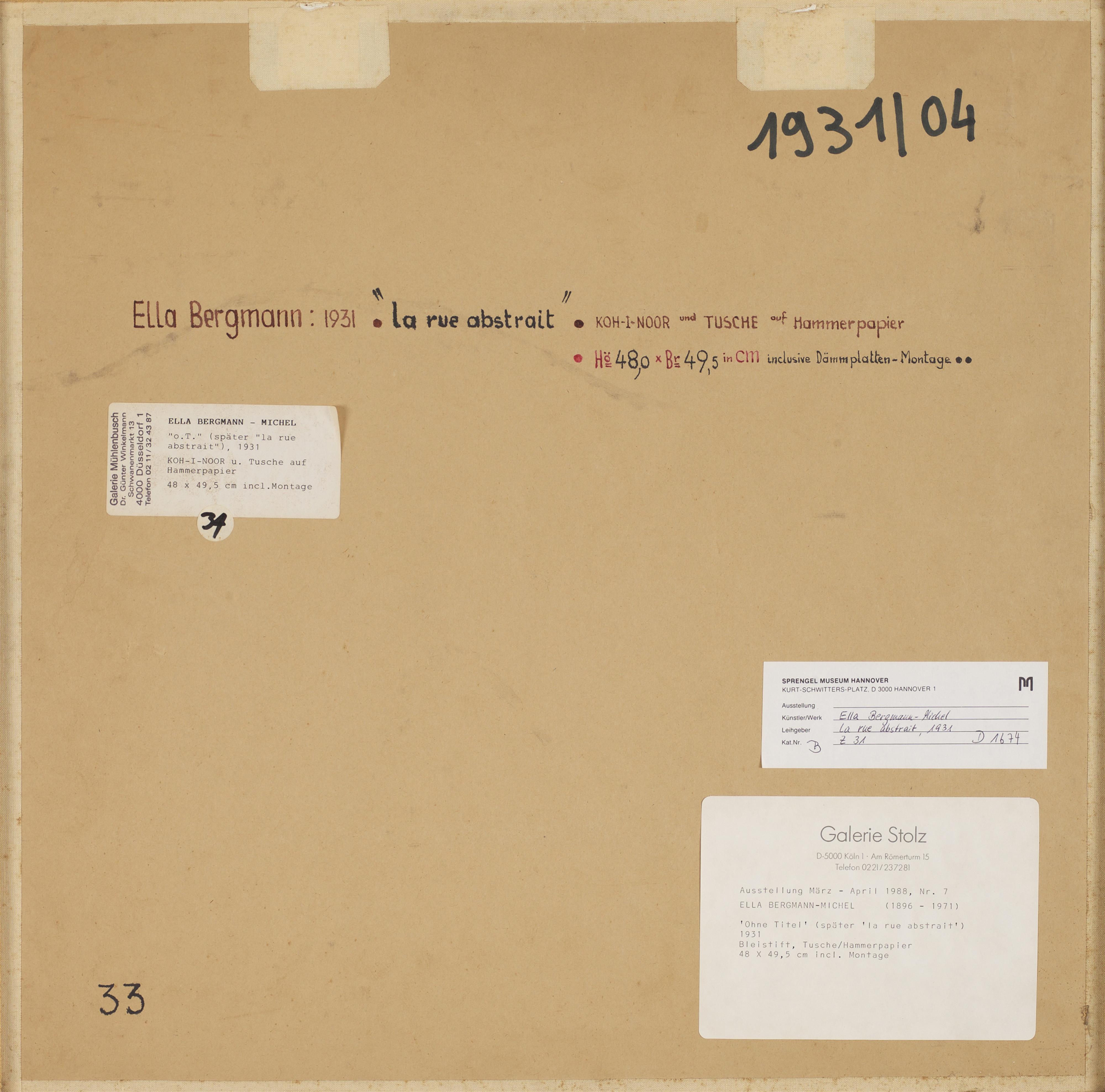Ella Bergmann-Michel
Untitled (later titled "La rue abstrait")
1931
India ink, pencil drawing and opaque white on Hammer paper, mounted on insulation board. 48 x 49.5 cm. Framed under glass. Monogrammed and dated 'EB 31' in India ink lower left and inscribed on verso, presumably by Robert Michel in black and red ink "Ella Bergmann : 1931. "La rue abstraite". KOH-I-NOOR und TUSCHE auf Hammerpapier. Hö 48,0 x Br 49,5, in cm inclusive Dämmplatten-Montage."
Droit de suite does not apply to this work.
Ella Bergmann and Robert Michel met in 1917 at the art school in Weimar, which would merge in 1919 and go down in history as the Bauhaus. After a brief guest appearance, both artists left the Bauhaus, whose rules seemed too stifling for them; they moved to the Taunus area, where they set up their studios in the former smeltmill that was part of the Michel family’s paint manufacturing business. The “Schmelz” soon became a meeting place for avant-garde artists: they welcomed guests including Kurt Schwitters, El Lissitzky, Moholy-Nagy and Willi Baumeister, among others.
Whereas, in the 1920s, Ella Bergmann-Michel was artistically primarily interested in optical phenomena, such as the refraction of light, her works of the 1930s resemble one another in their formal techniques and motifs: organic forms are set in relation to one another and juxtaposed with geometrical planes – bounded by lines in parallel- or cross-hatching and stippling. While her husband dealt with mechanical forms of functionality, Ella apparently continued to focus her attention on phenomena from the natural sciences. Looking at the organ-like forms she arrived at during this period, we automatically think of the view through a microscope: the view that also reveals the smallest living organisms – be it plasma or plankton – to our eye.
Our work on paper stands at the beginning of this phase in her oeuvre. It is characterised by an extremely harmonious relationship between “soft” and “hard” forms which, in spite of their planar quality, also permit a three-dimensional reading.
Provenance
Artist's estate; Deposit in the Sprengel Museum, Hanover, from 1988 to 2021 (label on reverse)
Exhibitions
Cologne 1988 (Galerie Stolz), Ella Bergmann-Michel, cat. no. 7 (label on the reverse); Düsseldorf (Galerie Mühlenbusch) (label on the reverse)




